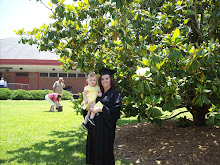Formative feedback occurs during the event or process. Summative feedback occurs at the end of the event or process. An instructor that likes to make changes during the process uses formative feedback. But if the instructor likes to complete the process, and then get feedback, she or he would use summative feedback. DID model use a feedback loop to insure that each step in functioning properly. DID model uses both formative and summative feedback to make sure that the instruction is up the standard needed to teach the students all the information he or she needs to be taught.
Formative feedback is used to ensure a way to keep a continuous flow of information as a process or system is implemented. Formative feedback is used during the process so that correction and modifications while the instructors is going the steps before she or he uses the process with the students. If the instructor goes through the process, and asks himself or herself a few questions, it will make it easier for the students to understand the information in the long run. Below it a few questions that the instructor can ask:
• Am I responding to all the learning styles?
• Are my objectives targeting the performance I intended?
• Is the environment nurturing and secure for all students?
• Are the technologies I have selected appropriate to the content and pedagogy?
• Is the data to be gathered from the assessment useful to determine necessary revisions?
Summative feedback is used always returned at the end of the process. Summative feedback is used to revise each step of the process once the entire process in completed. Summative feedback is used as a final check to the process. Below are a few questions to ask yourself while using summative feedback:
• Did the design successfully meet the needs of the learners?
• Did my objectives accurately capture, in performance terms, the essence of the content the students needed to learn?
• Was the learning environment that I established effective in promoting learning?
• Are the teaching and learning strategies sufficient for and effective in meeting the objectives I identified?
• Were the technologies I selected successful in supporting the targeted teaching and learning?
• Does the summative evaluation provide the data I need to determine whether the objectives were achieved?
Dynamic instructional design (DID) model will serve as the basis for designing technology-rich instruction. An instructor can use DID model as a guide to conceptualize how you will create your instructional unit. DID model have three basic parts: 1) Design 2) Plan 3) Act. You will use formative and summative feedback in the planning stage. You want to make sure that your process is effective before you get the acting stage. The acting stage is where the learners are involved. You really want all the kinks worked out before you try to teach the students.
Blog Reflection Week Ten (Website)
15 years ago

I agree with your comments on formative and summative feedback. I think we should all be flexible enough to make revisions to our creations on a regular basis. However, I'm not quite sure I agree or understand your comment about the learner being involved in the acting phase. I thought that was the phase where the teacher makes sure she/he has all the things ready to go for the lessons or the unit (ex. videos from the media center, CDs, supplies, room setup, list of items, etc.)
ReplyDeleteGood list of questions to ask yourself at all stages of teaching!
ReplyDeleteThe formative feedback intends to change, but also improves!
Your reflection is complete. It would be easier to read if you leave a line between paragraphs.
ReplyDelete